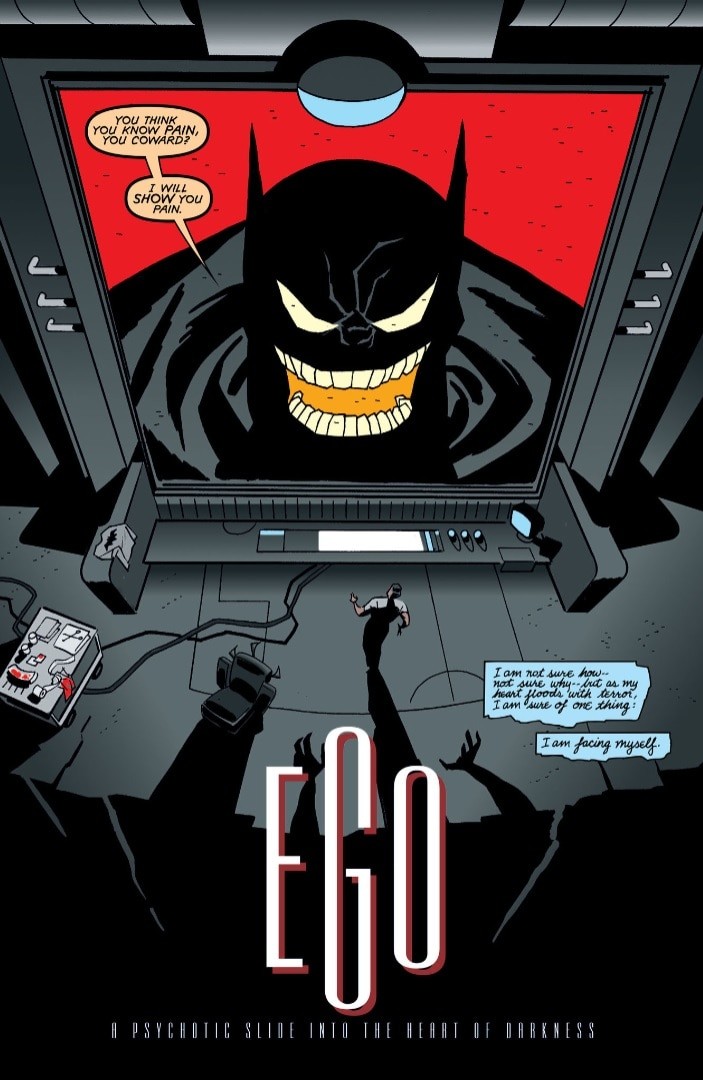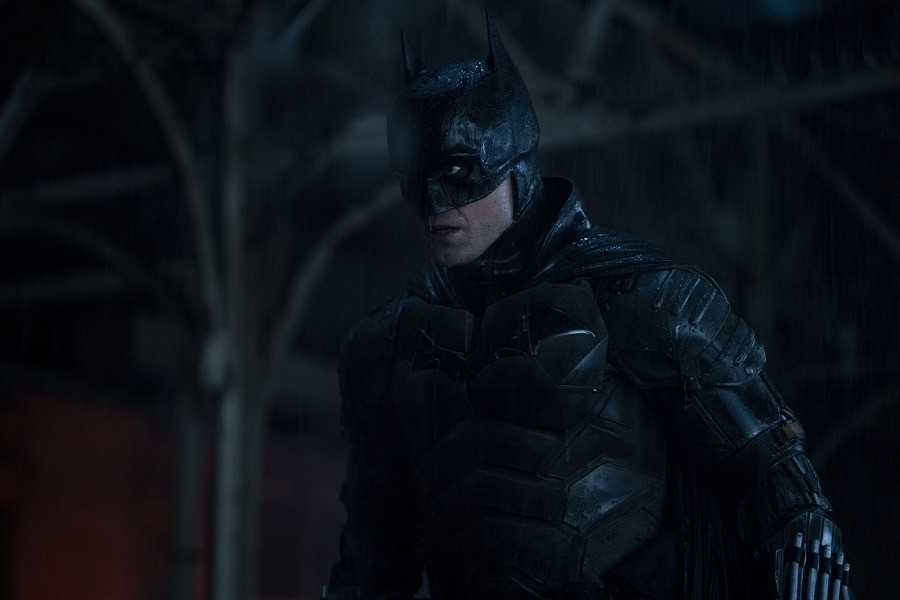Why doesn’t Batman kill? It’s a fundamental aspect of the Dark Knight’s character, a principle deeply ingrained in his identity and methods; however, that principle has been tested, explored, and sometimes even broken throughout Batman’s history, generating diverse interpretations of his famous moral code. At WHY.EDU.VN, we delve into the complex reasons behind this unwavering rule, examining its origins, psychological implications, and impact on the world around him, providing insights into the hero’s moral compass, ethical boundaries, and the constant fight to maintain his humanity. Explore the depths of Batman’s choices, moral dilemmas, and unwavering commitment to justice, offering a comprehensive understanding of this iconic hero.
1. The Origins of the No-Kill Rule
The edict against taking a life is the cornerstone of Batman’s identity, yet his early escapades told a different story. Initially, in 1939’s Detective Comics #27, Batman was far more lethal, showing no qualms about ending criminals’ lives. This grim approach, however, soon faced a turning point.
1.1. From Lethal Vigilante to Symbol of Hope
The shift from a killer to a hero who staunchly opposes killing wasn’t organic. Editor Whitney Ellsworth recognized the growing concern among parents regarding the violent content in comic books. The pressure to sanitize Batman’s image was on. While creator Bob Kane lamented the loss of Batman’s pulp-inspired edge, co-creator Bill Finger saw it as a welcome change.
1.2. The Defining Tragedy and the Birth of a Rule
Bill Finger, the writer behind Batman’s origin story, established the foundation for his no-kill rule. The murder of Bruce Wayne’s parents became the catalyst for his vow: to prevent others from experiencing the same loss he endured. This tragedy instilled in him the belief that taking a life is the ultimate transgression.
1.3. The Evolution of a Moral Code
Over the decades, this vow solidified into an unshakeable principle. Batman’s refusal to kill became a defining characteristic, distinguishing him from other vigilantes and superheroes. It set him apart as a symbol of justice, not vengeance. It became the core of his being, setting an ethical compass for those who follow in his footsteps.
2. Psychological Underpinnings: Fear and Control
Beyond the promise forged in tragedy, the Dark Knight’s restraint from killing goes deeper into the psyche of Bruce Wayne. His stance is as much about preventing an external loss of life as it is about staving off an internal descent into darkness.
2.1. Batman: Ego and the Beast Within
Darwyn Cooke’s influential graphic novel, Batman: Ego, delves into the depths of Batman’s psyche. It portrays a constant battle within Bruce Wayne, a struggle to contain the primal rage unleashed on the night his parents were murdered.
2.2. The Slippery Slope Argument
Cooke’s story suggests that for Batman, killing even once would unleash the beast within, turning him into the very monster he fights against. The no-kill rule, therefore, becomes a crucial mechanism for controlling his inner darkness, a constant reminder of the line he must never cross.
2.3. The Fear of Becoming a Monster
This fear of succumbing to his own darkness is a recurring theme in Batman stories. It highlights the fragility of his moral code and the constant effort required to maintain it.
3. The Social and Ethical Implications
Batman’s no-kill rule has wider implications, affecting his relationships, his impact on Gotham City, and his role as a symbol of hope. It forces him to confront the ethical complexities of vigilantism and the responsibility that comes with power.
3.1. Inspiring Hope vs. Enabling Crime
The question of whether Batman’s policy saves or endangers more lives is a recurring theme in Batman stories. While some argue that refusing to kill allows criminals to escape and inflict further harm, others maintain that it inspires hope and upholds the principles of justice.
3.2. The Impact on Gotham City
Batman’s influence extends far beyond individual criminals. He inspires citizens to stand up against injustice, fostering a sense of hope in a city plagued by corruption and despair. His moral stance sets a precedent for others, demonstrating that even in the darkest of times, principles matter.
3.3. Setting an Example for Future Generations
The presence of characters like Robin and Batgirl highlights Batman’s role as a mentor and leader. By adhering to his no-kill rule, Batman sets an example for these young heroes, teaching them the importance of restraint and the value of every human life.
4. Exceptions and Controversies: When the Rule is Bent
While Batman’s no-kill rule is generally unwavering, there have been instances where he has crossed the line, leading to debates about the nature of his moral code and the circumstances under which it can be compromised.
4.1. Early Interpretations and “Necessary” Deaths
In his early appearances, the definition of “killing” was ambiguous. Actions leading to a person’s death were sometimes considered justifiable, particularly when it was seen as a necessary consequence of stopping a greater evil.
4.2. Indirect Causation and Moral Responsibility
Christopher Nolan’s Batman Begins depicts an instance where Batman allows Ra’s al Ghul to die, arguing that he did not directly kill him. Such scenarios raise questions about the nuances of moral responsibility.
4.3. Extreme Circumstances and the Loss of Control
Stories like The Dark Knight Returns and Batman v Superman present a broken Batman, driven to extremes by grief and despair. These instances demonstrate the potential for even the most steadfast principles to be compromised under immense pressure.
5. The Batman Who Laughs: The Ultimate Violation
The concept of the Batman Who Laughs represents the antithesis of everything Batman stands for. It is a terrifying vision of what he could become if he abandoned his principles and embraced the darkness within.
5.1. A Batman Tainted by the Joker’s Madness
The Batman Who Laughs is a Bruce Wayne who has been infected with the Joker’s madness, losing his sanity and moral compass. He embodies the potential for corruption that lies within Batman himself.
5.2. The World’s Greatest Killer
This twisted version of Batman revels in violence and chaos, proving that without restraint, even the greatest hero can become the ultimate villain. He is a living testament to the importance of Batman’s no-kill rule.
5.3. A Cautionary Tale
The Batman Who Laughs serves as a cautionary tale, reminding us that the line between hero and villain can be thin, and that even the most noble intentions can be corrupted. He reinforces the importance of unwavering principles in the fight against evil.
6. Alternate Realities and Shifting Moral Codes
The DC Multiverse allows for endless variations of Batman, each with their own interpretation of his moral code. These alternate realities offer intriguing explorations of what happens when Batman’s principles are challenged or abandoned.
6.1. Red Son and the Socialist Batman
In Superman: Red Son, Batman is a Russian revolutionary who opposes Superman’s communist regime. This version is willing to use lethal force in his fight for freedom, highlighting the idea that even Batman’s principles can be influenced by his environment.
6.2. Flashpoint and the Vengeful Thomas Wayne
In the Flashpoint timeline, Bruce Wayne is killed instead of his parents, leading his father, Thomas Wayne, to become Batman. This version is far more brutal and willing to kill, demonstrating how grief and vengeance can corrupt even the noblest of intentions.
6.3. The Endless Possibilities of the Multiverse
The DC Multiverse offers a playground for exploring the boundaries of Batman’s character. By presenting different versions of the Dark Knight, these stories force us to question the nature of heroism and the importance of moral codes.
7. The Influence of Robin
The introduction of Robin had a profound impact on Batman’s character. The young sidekick brought light into the Dark Knight’s world, influencing him to adopt a more hopeful and compassionate approach to crimefighting.
7.1. A Symbol of Hope and Innocence
Robin represents the innocence that Batman is fighting to protect. His presence serves as a constant reminder of the value of human life and the importance of preserving it.
7.2. A Moral Compass
Robin acts as a moral check for Batman, preventing him from crossing the line and reminding him of the principles he stands for. The dynamic between the two heroes reinforces the importance of mentorship and accountability.
7.3. The Evolution of the Dynamic Duo
The partnership between Batman and Robin has evolved over the years, but the core dynamic remains the same: Batman provides experience and guidance, while Robin offers hope and compassion. Together, they represent a balanced approach to fighting crime.
8. Batman in Film: Varying Interpretations of the Rule
The cinematic adaptations of Batman have presented different interpretations of his no-kill rule, reflecting the changing attitudes towards violence and morality in popular culture.
8.1. Tim Burton’s Darker Knight
Tim Burton’s Batman films embraced the character’s darker aspects, depicting a Batman who was more willing to use lethal force. These films reflected the grittier tone of the comics in the 1980s and 1990s.
8.2. Christopher Nolan’s Moral Ambiguity
Christopher Nolan’s Dark Knight trilogy explored the ethical complexities of Batman’s methods, raising questions about the consequences of his actions and the justifications for his choices.
8.3. Zack Snyder’s Controversial Depiction
Zack Snyder’s Batman v Superman presented a more brutal and vengeful Batman, who had seemingly abandoned his no-kill rule. This depiction sparked controversy among fans, who felt that it betrayed the core of the character.
9. The Ongoing Debate: A Timeless Question
The question of why Batman doesn’t kill remains a topic of ongoing debate among fans and critics alike. There is no easy answer, as the reasons are complex and multifaceted, encompassing psychological, ethical, and social considerations.
9.1. The Value of Human Life
At its core, the debate revolves around the value of human life and the circumstances under which it can be taken. Some argue that every life is sacred and that no one, not even Batman, has the right to decide who lives and who dies.
9.2. The Consequences of Violence
Others focus on the consequences of violence, arguing that killing only perpetuates a cycle of violence and that Batman’s no-kill rule is essential for breaking that cycle.
9.3. A Reflection of Our Own Values
Ultimately, the debate about Batman’s no-kill rule reflects our own values and beliefs about justice, morality, and the role of heroes in society. It is a question that will continue to be explored and debated for years to come.
10. Conclusion: Batman’s Enduring Legacy
The fact that the question “Why doesn’t Batman kill?” continues to resonate with audiences speaks to the enduring power of the character. His unwavering commitment to his principles, even in the face of immense pressure, makes him a symbol of hope and inspiration.
10.1. A Symbol of Hope
Batman’s no-kill rule represents the best of humanity: compassion, restraint, and a belief in the possibility of redemption. It is a reminder that even in the darkest of times, we can choose to uphold our values and fight for a better world.
10.2. An Inspiration to Others
Batman inspires us to be better, to stand up for what is right, and to never give up hope. His legacy extends far beyond the comic books and movies, influencing countless individuals to make a positive impact on the world.
10.3. The Enduring Power of Principles
In a world often characterized by cynicism and moral ambiguity, Batman’s unwavering commitment to his principles serves as a beacon of light. He reminds us that principles matter and that even in the face of adversity, we must never compromise our values.
At WHY.EDU.VN, we understand the importance of exploring complex questions and seeking answers that provide clarity and understanding. Just like the citizens of Gotham who look to Batman for guidance, you can rely on us to provide insightful and well-researched explanations on a wide range of topics. If you’re grappling with a difficult question or simply curious about the world around you, visit WHY.EDU.VN and let our team of experts provide the answers you seek. Contact us at 101 Curiosity Lane, Answer Town, CA 90210, United States, or reach out via Whatsapp at +1 (213) 555-0101.
FAQ: Frequently Asked Questions About Batman’s No-Kill Rule
Here are some frequently asked questions about Batman’s no-kill rule:
| Question | Answer |
|---|---|
| 1. Why did Batman kill in his early comics? | In Batman’s early appearances, the character was still being defined and was influenced by pulp heroes who were more comfortable with lethal force. Editor Whitney Ellsworth later intervened to soften the character’s image. |
| 2. What is the significance of Batman: Ego? | Batman: Ego delves into the psychological reasons behind Batman’s no-kill rule, portraying a constant battle within Bruce Wayne to contain the primal rage unleashed on the night his parents were murdered. |
| 3. How does Robin influence Batman’s moral code? | Robin represents the innocence that Batman is fighting to protect and acts as a moral check, preventing him from crossing the line and reminding him of the principles he stands for. |
| 4. Are there exceptions to Batman’s no-kill rule? | While Batman generally adheres to his no-kill rule, there have been instances where he has crossed the line, leading to debates about the nature of his moral code and the circumstances under which it can be compromised. |
| 5. What is the Batman Who Laughs? | The Batman Who Laughs is a Bruce Wayne who has been infected with the Joker’s madness, losing his sanity and moral compass. He embodies the potential for corruption that lies within Batman himself. |
| 6. How have Batman movies portrayed his no-kill rule? | The cinematic adaptations of Batman have presented different interpretations of his no-kill rule, reflecting the changing attitudes towards violence and morality in popular culture. |
| 7. Why is Batman’s no-kill rule so important? | Batman’s no-kill rule represents the best of humanity: compassion, restraint, and a belief in the possibility of redemption. It is a reminder that even in the darkest of times, we can choose to uphold our values. |
| 8. What if Batman killed the Joker? | Some argue that if Batman killed the Joker, he could save countless lives, but others believe that doing so would compromise his moral code and turn him into the very thing he’s fighting against. |
| 9. How does the multiverse affect Batman’s no-kill rule? | The DC Multiverse allows for endless variations of Batman, each with their own interpretation of his moral code, offering intriguing explorations of what happens when Batman’s principles are challenged or abandoned. |
| 10. Where can I find more information about Batman? | Visit why.edu.vn to find comprehensive answers to all your questions about Batman and other fascinating topics. Our team of experts is dedicated to providing insightful and well-researched explanations. |



